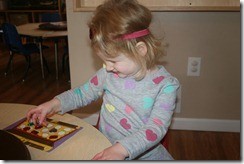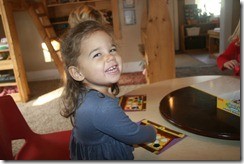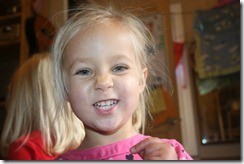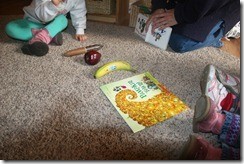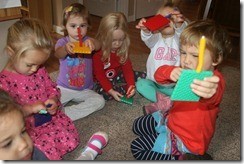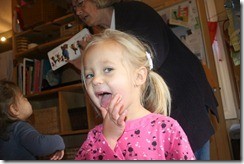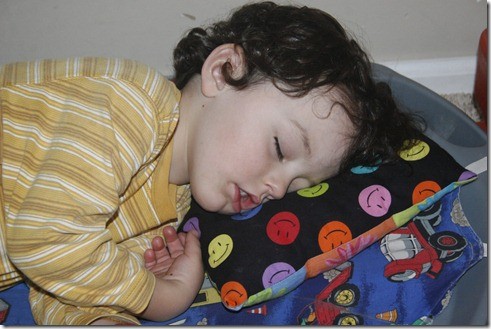“Sleepy school children make crabby classmates, while students who get plenty of sleep are better behaved, according to a new study published this week in the journal Pediatrics.”
Did you know that kids who sleep more cope better? I saw this article this morning and thought that is is such a good reminder for those of us with children and wanted to share it on the blog today. (http://thechart.blogs.cnn.com/2012/10/15/kids-who-sleep-more-cope-better/)
While this research study is specific to elementary aged children, I have found that behavior issues and lack of overall performance of the child is also true for sleep deprived early childhood children. The study found that, “Students who were sleep-deprived not only seemed overly tired, but were more impulsive and irritable than their well-rested classmates. They were quick to cry, lose their tempers or get frustrated. The children who got plenty of sleep had a better handle on their emotions and were more alert in class.”
From this research, it is clear that only small amounts of additional sleep (27 minutes per day) or small amounts of less sleep are what really can make a difference.
What can parents of young children do to help their child get enough sleep?
1. Make sure children are allowed bedtimes and wake up times that allow them to get the recommended amount of sleep (http://www.webmd.com/parenting/guide/sleep-children):
1-3 Years Old: 12 – 14 hours per day (While toddlers need up to 14 hours a day of sleep, they typically get only about 10. Most children from about 21 to 36 months of age still need one nap a day, which may range from one to three and a half hours long. They typically go to bed between 7 and 9 p.m. and wake up between 6 and 8 a.m.)
3-6 Years Old: 10 – 12 hours per day (Children at this age typically go to bed between 7 and 9 p.m. and wake up around 6 and 8 a.m., just as they did when they were younger. At 3, most children are still napping, while at 5, most are not. )
7-12 Years Old: 10 – 11 hours per day (There is still a wide range of bedtimes, from 7:30 to 10 p.m. The average is only about 9 hours.)
2. Use a predictable bedtime routine each night and for naps
Do approximately the same activities each night or at nap time, in the same order. This is what will help your child develop sleep cues, so that over time just doing the routine makes your child sleepy.
3. Put your child down awake: Children older than four months have the ability to soothe themselves into sleep. There are a variety of things that children may do as they relax, and these skills are hidden inside your child, too, waiting to be discovered. They may include:
- Sucking a thumb or hand
- Gently moving her head from side to side
- Rhythmic kicking or arm movements
- Holding a lovey or stuffed animal
- Finding a favorite comfy position
- Singing or talking
- Sliding his head to the top of the crib for comfort
- Twirling her hair
4. Protect sleep environment to ensure healthy sleep: Remove whatever is in or around your child’s crib or bed that doesn’t contribute to sleep–or is a potential safety hazard. To prevent early morning wakings and to help your child take good naps, make sure the room is darkened (8 to 9 on a scale of 10, 10 being dark), and use white noise (such as an appliance that makes a steady hum, or environmental sound machine) if you have a busy household (other children playing, dogs barking) or neighborhood (traffic sounds outside your child’s window). (suggestions 2-4 from http://today.msnbc.msn.com/id/18274933/ns/today-parenting_and_family/t/tips-get-your-kid-sleep/#.UH2IP8XA-So)
This morning the YMCA swim teachers reported another fabulous clas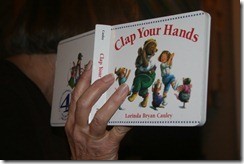 s. Jane jumped in all by herself for the first time! Ada, Jane, Finn, Elliott and Macy all learned sitting dives.
s. Jane jumped in all by herself for the first time! Ada, Jane, Finn, Elliott and Macy all learned sitting dives.
The children at WF spent a lot of time enjoying the sunshine! Inside there were several activities that revolved around the new younger children favorite story: Clap Your Hands.
Breakfast was cornflakes and apples. Lunch was whole wheat tortillas with ham and cheese, peas, and bananas.
Enjoy your day!
Tami

